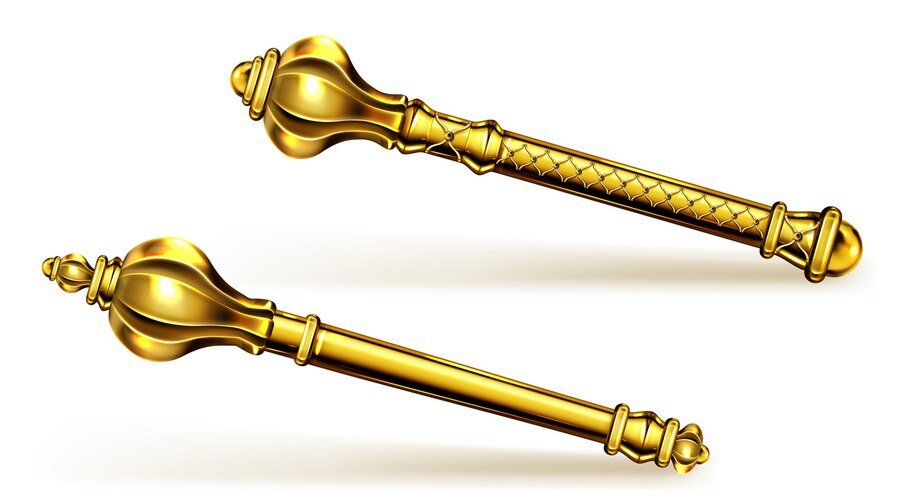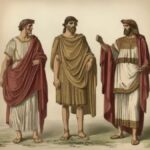The term “gada” is a powerful and significant symbol that has been used across various cultures throughout history. This article explores the meaning, origin, and relevance of “gada” in different traditions, highlighting its role as a symbol of power, spirituality, and authority. Whether it’s seen in ancient scriptures, folklore, or modern-day practices, the gada has remained an iconic representation of strength and leadership.
What is a Gada?
The word “gada” originates from Sanskrit and typically refers to a mace or club-like weapon. It is often depicted as a heavy, cylindrical object with a rounded head, symbolizing both physical strength and authority. The gada is not just a weapon; it carries profound cultural and spiritual significance in several ancient traditions, particularly in Hinduism, Buddhism, and Indian martial arts.
In Hindu mythology, the gada is associated with several deities, most notably Lord Vishnu and Lord Shiva. It is often depicted in the hands of these gods, symbolizing their power to protect, destroy, and create. The significance of the gada goes beyond mere weaponry; it is a divine instrument, symbolizing justice, righteousness, and cosmic balance.
The Gada in Hinduism and Indian Mythology
In Hinduism, the gada is an essential part of divine iconography. Lord Vishnu, one of the principal deities of the religion, is often depicted holding a gad’a. The weapon is called Kaumodaki and is said to have been created by the god Vishwakarma, the divine architect. It represents strength, protection, and divine justice.
Lord Shiva, another prominent Hindu god, is also depicted with a gada, symbolizing his role as both a destroyer and a protector of the universe. In the famous battle scenes in Hindu mythology, the gada is shown as a tool for establishing cosmic order.
The gada’s significance is further explored in Hindu epics such as the Mahabharata, where it is wielded by Bhima, one of the five Pandava brothers. Bhima’s mighty mace, called Gada Bhima, plays a critical role in the battles fought by the Pandavas, representing brute strength, valor, and tenacity.
The Role of the Gada in Indian Martial Arts
The gada is also a key component of traditional Indian martial arts, particularly in forms such as Malla-yuddha (wrestling) and Gada-yuddha (mace fighting). These ancient martial techniques involve the use of the gad’a as a tool for combat, requiring strength, dexterity, and skill to master.
Training with the gad’a was historically considered a rite of passage for warriors in ancient India. The weapon’s weight and the complexity of its use made it an excellent training tool to build both physical strength and mental focus. The movements of gad’a fighting are believed to be highly disciplined and systematic, requiring deep practice and precision.
Gada in Other Cultures
While the gad’a is primarily associated with Hinduism and Indian culture, variations of the mace-like weapon have appeared in other parts of the world. In African cultures, for example, similar clubs are used in ceremonial contexts to denote leadership and power. Similarly, in Western history, the mace was used by royalty and as a symbol of power in the medieval period.
In ancient Greece, the staff of Heracles, also known as the club of Hercules, mirrors the concept of the gad’a. This symbol of power and might is evident in Greek mythology, where Heracles is often depicted carrying a large club as part of his heroic quests.
The Symbolism of Gada
The gada is far more than a weapon; it is a potent symbol. In Hinduism, the gad’a represents the following:
- Strength and Protection: The gad’a is a tool used by gods and heroes to protect the weak and uphold justice.
- Divine Authority: Holding a gad’a is often a mark of divinity or kingship, symbolizing the bearer’s right to rule and maintain order.
- Victory over Evil: In many depictions, the gad’a is used to defeat demons and forces of evil, symbolizing the triumph of good over evil.
Beyond its physical form, the gad’a is a metaphor for spiritual power, discipline, and responsibility. Its significance transcends time, continuing to influence both religious practices and secular traditions.
The Gada in Modern Times
In the modern world, the gada’s symbolic power remains relevant. It is frequently seen in religious ceremonies, festivals, and rituals. In India, the gad’a is often used as a symbol in religious processions and is carried during festivals such as Dussehra or Diwali, when devotees honor deities and their powers.
The gada also serves as an emblem in political or cultural contexts. In many parts of India, political leaders or heads of organizations may hold a ceremonial gad’a during public appearances, underscoring their authority or role as protectors of the people.
In addition, the gada’s influence extends into the world of fitness. The use of a macebell or Indian club, which is essentially a modern iteration of the traditional gad’a, has become a popular tool in functional training. The unique movement patterns and resistance training involved in using the macebell are said to improve strength, balance, and coordination.
Conclusion
The gada is much more than a physical weapon. It is a profound symbol of power, authority, and spiritual strength. Whether used by gods, warriors, or modern-day athletes, the gad’a represents an unbroken lineage of tradition, strength, and resilience. Its presence in ancient texts, mythology, and even modern culture speaks to its timeless appeal and enduring significance.
For those seeking to explore the spiritual and cultural dimensions of the gad’a, it remains a compelling symbol of both ancient and modern traditions. As the gad’acontinues to hold a place in global cultures, its meaning as a symbol of protection, authority, and strength endures.
FAQs
1. What does the gada represent in Hinduism?
In Hinduism, the gada represents strength, protection, and divine justice. It is primarily associated with gods like Vishnu and Shiva, who wield the gada as a symbol of their power and authority.
2. How is the gada used in Indian martial arts?
In traditional Indian martial arts, the gad’ais used in combat training. gad’a-yuddha, or mace fighting, is a discipline that emphasizes strength, precision, and strategic movement. It was historically practiced by warriors to develop both physical power and mental focus.
3. What is the significance of the gada in Indian culture?
The gada holds significant cultural importance in India, representing leadership, power, and protection. It is often used in religious ceremonies and festivals, especially those honoring Hindu deities like Vishnu and Shiva.
4. Is the gada used outside of India?
Yes, the gada has cultural and symbolic equivalents in other parts of the world. For instance, the club of Heracles in Greek mythology shares similarities with the gad’a. Additionally, African cultures have used mace-like weapons as symbols of leadership and power.
5. Can the gada be used for physical fitness?
Yes, modern versions of the gada, such as macebells, are used in functional fitness training







